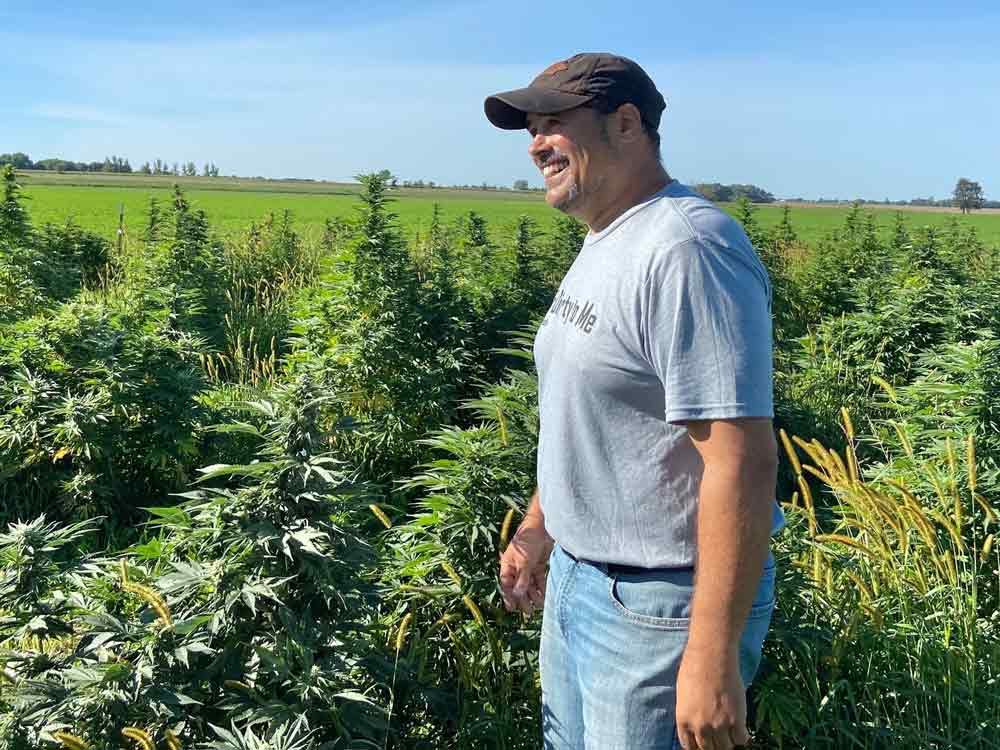No-Till Farmer
Get full access NOW to the most comprehensive, powerful and easy-to-use online resource for no-tillage practices. Just one good idea will pay for your subscription hundreds of times over.

FIELD DAY FUN. In early September 2021, Austin, Minn., no-tiller Tom Cotter hosted a field day that included a tour of his “farm-to-shop” CBD hemp operation.
Growing a new crop can pose challenges, including learning best management practices, integrating a new workload and securing the right equipment and supplies. But one of the biggest challenges is often figuring out where and how to sell the new crop.
The hemp market, which opened up with the passage of the 2018 Farm Bill, has been particularly difficult for farmers to navigate largely due to poorly defined interstate commerce laws for CBD (cannabidiol) hemp as well as a lack of processing facilities. Many farmers who planted and harvested hemp in these first few years have suffered large losses due to crops testing “hot” or being confiscated in transport, while others have simply been unable to sell their goods.
Austin, Minn., no-tiller Tom Cotter, on the other hand, has managed to not only grow the crop profitably, he’s doing it organically while positioning himself to expand as the marketplace develops. And he credits his strip-till, no-till and cover crop operation with giving him the skills and insights he needed to facilitate this success.
Cotter’s gradual transition from fully conventional farming to regenerative practices to organic strip-till hemp actually started through an unintentional introduction to cover crops.
“Back in the late 1990s, my dad had planted some dwarf Essex rape after peas one year. The next year, right in that spot, we had our best corn,” he says. “I was trying to figure out what the cause was, so I looked at the chemical, the fertilizer, the seed…